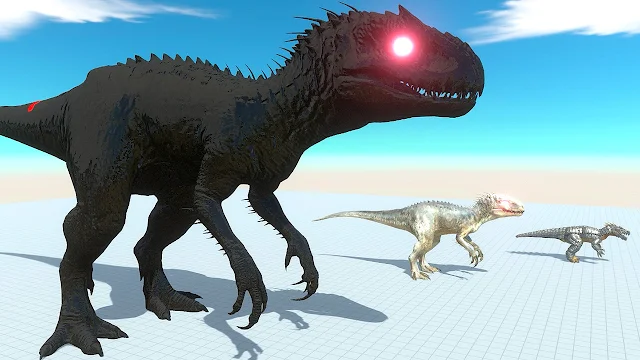- Get link
- X
- Other Apps
- Get link
- X
- Other Apps
Indominus Rex Evolution
The Indominus Rex, a fictional hybrid dinosaur created for the Jurassic World franchise, has captivated audiences with its terrifyingly advanced capabilities. However, did you know that the concept of a hybrid dinosaur is not entirely far-fetched? In fact, scientists are continuously exploring the possibility of creating such creatures through genetic engineering, and the Indominus Rex could be seen as a glimpse into the future of evolutionary biology.
In this article, we will explore the topic of Indominus Rex Evolution, discussing its possible implications, the scientific research behind it, and the ethical concerns that arise when tampering with the natural order.
What is Indominus Rex Evolution?
Indominus Rex Evolution is the process of creating hybrid animals using genetic engineering techniques. The Indominus Rex in the Jurassic World franchise was created by combining the DNA of various dinosaurs and other animals to create a new, more powerful species. In real life, scientists are attempting to create hybrid animals by splicing the DNA of different species together.
The Indominus Rex is an example of what could be achieved through the genetic engineering of animals. By manipulating DNA, scientists could potentially create animals with desirable traits such as increased intelligence, strength, or disease resistance. However, this process raises many ethical concerns.
Scientific Research behind Indominus Rex Evolution
Scientists have been experimenting with hybrid animals for many years. In 2003, scientists created a "geep," which was a hybrid between a goat and a sheep. Since then, other hybrids have been created, such as the "zorse," a cross between a zebra and a horse.
More recently, researchers have been experimenting with hybridizing extinct species, such as the woolly mammoth. In 2019, researchers announced that they had successfully grown a hybrid mouse embryo that contained cells from both a rat and a mouse.
The technology used to create these hybrids is known as CRISPR-Cas9, a genetic editing tool that allows scientists to target specific genes and edit or replace them with desired traits. While the technology shows promise, there are still many ethical concerns surrounding the creation of hybrid animals.
Ethical Concerns
The creation of hybrid animals raises many ethical concerns, particularly around animal welfare and the disruption of natural ecosystems. Hybrid animals may suffer from genetic abnormalities or other health problems, and they may also struggle to adapt to their environments.
There are also concerns about the potential impact of hybrid animals on natural ecosystems. The introduction of new species into an ecosystem can disrupt the balance of the ecosystem and harm native species. Additionally, hybrids may interbreed with other species, creating new hybrids and further disrupting the ecosystem.
FAQs
Q: What is genetic engineering? A: Genetic engineering is the process of manipulating the genetic makeup of an organism, usually by adding, deleting, or changing specific genes.
Q: Can scientists really create hybrid animals? A: Yes, scientists have been creating hybrid animals for many years. While the technology is still developing, it is possible to combine the DNA of different species to create new hybrids.
Q: What are the benefits of creating hybrid animals? A: Creating hybrid animals could potentially lead to the creation of new species with desirable traits such as increased intelligence, strength, or disease resistance.
Q: What are the ethical concerns around creating hybrid animals? A: The creation of hybrid animals raises many ethical concerns, particularly around animal welfare and the disruption of natural ecosystems.
Q: What is CRISPR-Cas9? A: CRISPR-Cas9 is a genetic editing tool that allows scientists to target specific genes and edit or replace them with desired traits.
Conclusion
Indominus Rex Evolution is a fascinating topic that raises many ethical concerns. While scientists are continuously exploring the possibilities of genetic engineering
- Get link
- X
- Other Apps

Comments
Post a Comment